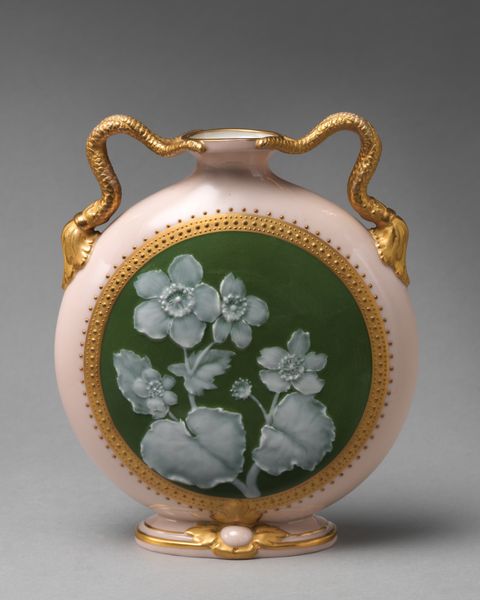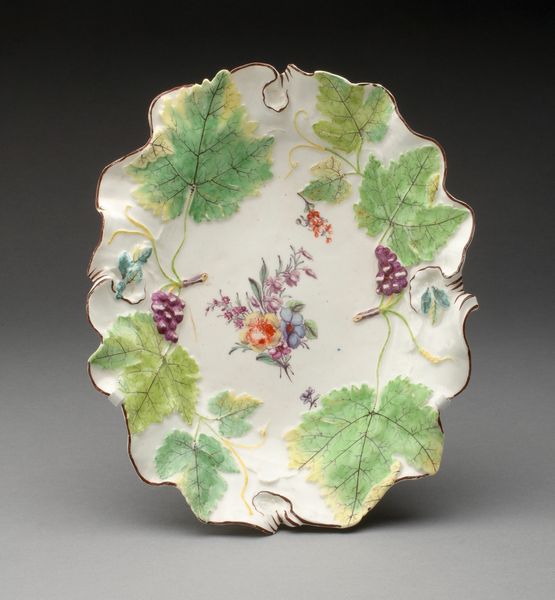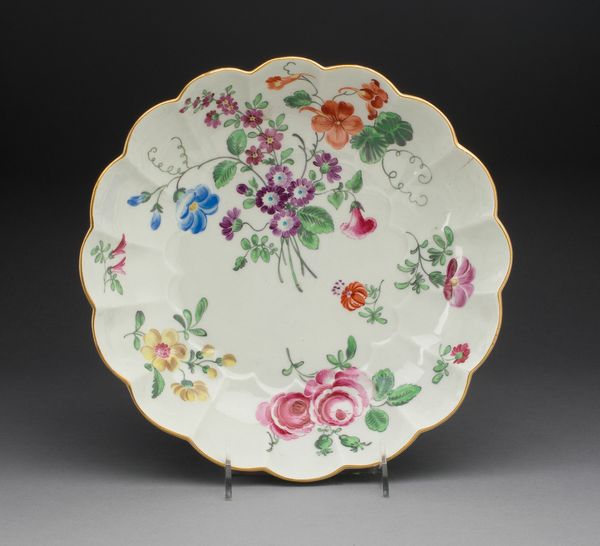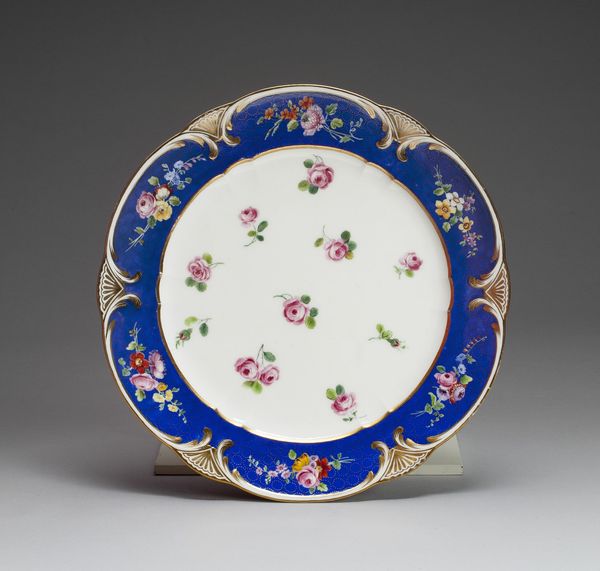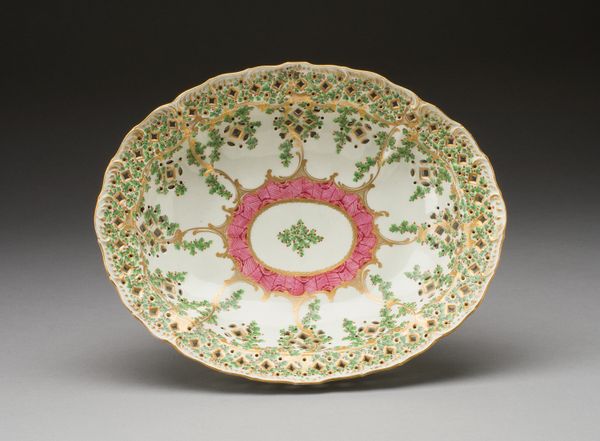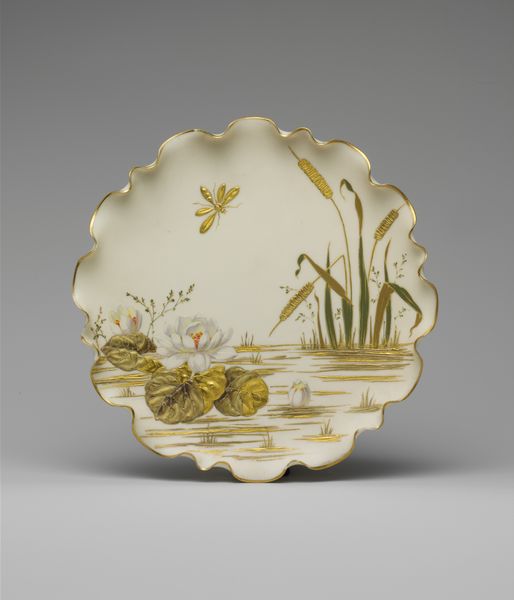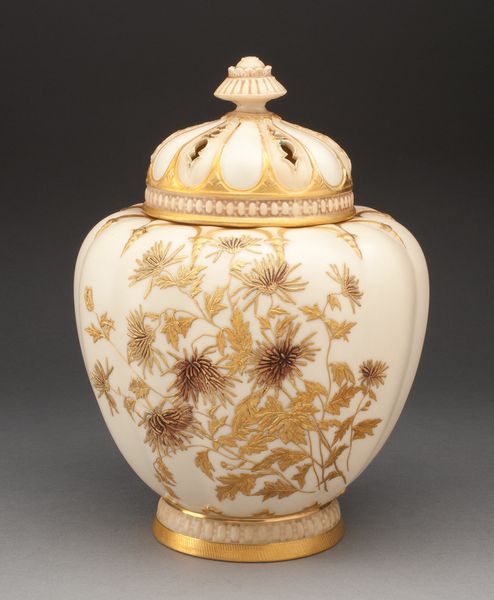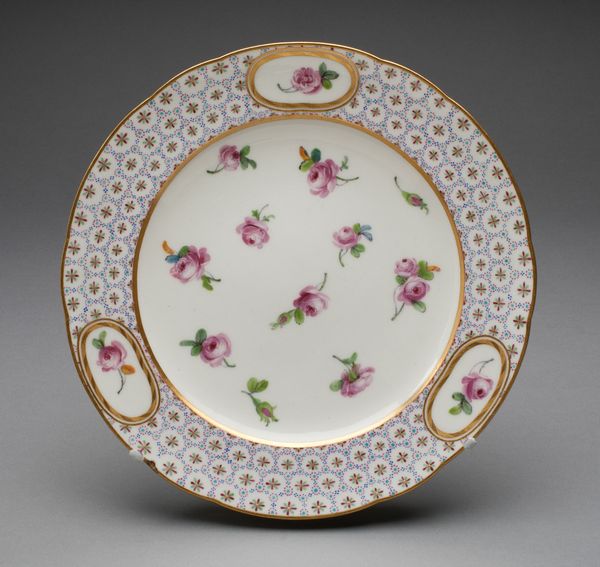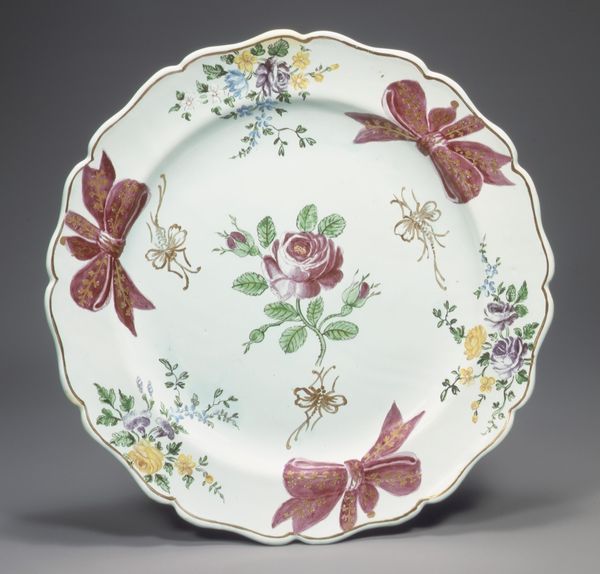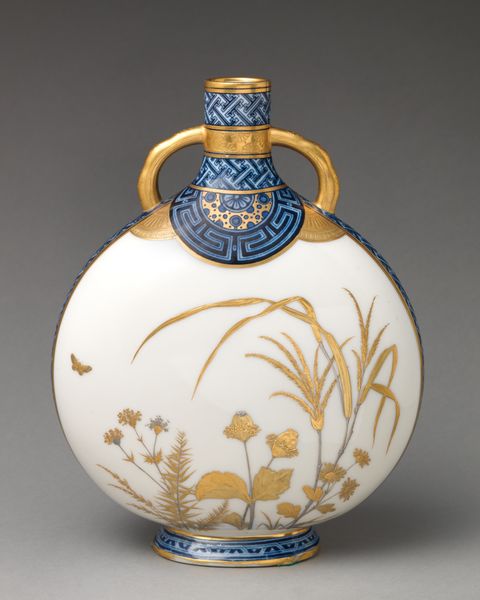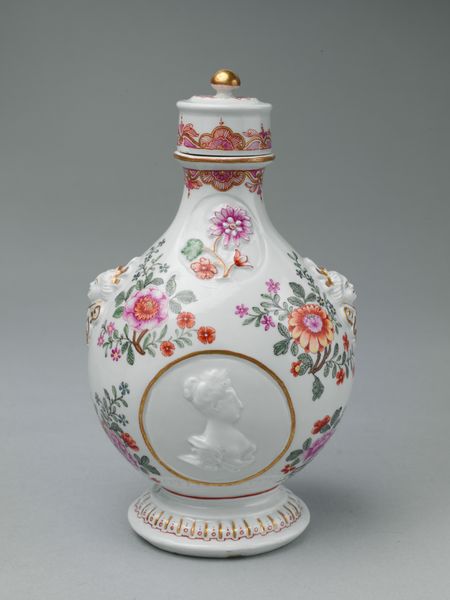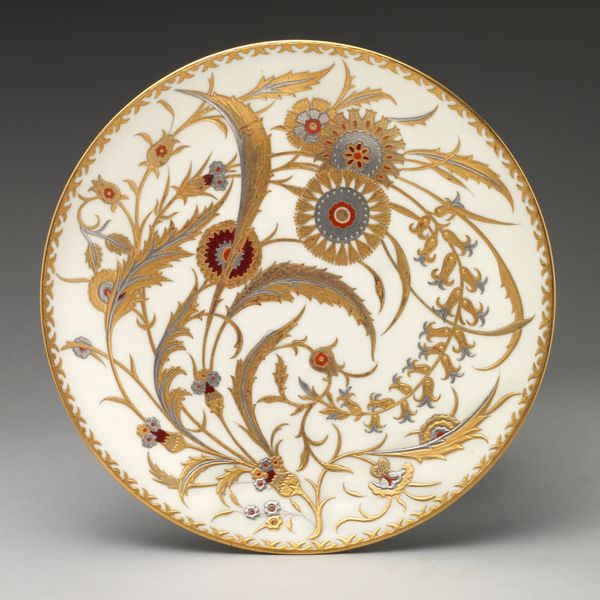
ceramic, porcelain, sculpture
#
natural stone pattern
#
circular oval feature
#
3d printed part
#
ceramic
#
jewelry design
#
virtual 3d design
#
round design
#
porcelain
#
3d shape
#
stoneware
#
sculpture
#
ceramic
#
round circular shape
#
decorative-art
Dimensions: confirmed: 9 5/8 × 8 × 3 in. (24.4 × 20.3 × 7.6 cm)
Copyright: Public Domain
Curator: Just look at the "Moon flask with white grape leaf motifs", crafted in the 1880s, currently residing here at the Metropolitan Museum of Art. It’s an absolutely striking example of decorative art in porcelain, isn't it? Editor: It is lovely! My first impression is one of restrained opulence. The matte, pale green backdrop contrasted with the white, almost ghostly grape leaves gives it a slightly ethereal, almost melancholic feel. Curator: Indeed! These flasks, with their circular, flattened bodies, became popular during the Qing dynasty in China and later gained traction in European markets eager to embrace the aesthetics of Japonisme. Editor: I'm intrigued by how it navigates that cultural exchange. The grape leaf motif, common in Western art, is rendered here with an Eastern sensibility. Does this fusion speak to larger issues of colonial appropriation and artistic hybridity during the late 19th century? How do we read the artist's intentions? Curator: Well, the flask’s very form acknowledges this East-West dialogue. By the 1880s, we see European and American manufacturers consciously adapting historical Asian designs and decorative techniques for Western consumers. These objects, made for display rather than function, performed cultural diplomacy, creating a perceived connection. Editor: I also can't help but think about the hidden symbolism of the leaves. What about life cycles, death and rebirth and cycles of knowledge, oppression, power. Curator: Absolutely. By considering this piece, alongside other contemporary examples of similar artwork, we gain insight into the complex social, political, and economic currents that shaped artistic production and reception during that period. It’s through the politics of image that objects like this truly speak. Editor: Looking closely I understand now, in a new and unexpected way, the tensions and textures within the encounter between East and West. Curator: Exactly. Hopefully, now, our listeners will feel that, by analyzing such a beautiful artwork they gained not only understanding about an important artifact, but a point of entry into the complex historical events, artistic convergences and social structures which frame and shape art production itself.
Comments
No comments
Be the first to comment and join the conversation on the ultimate creative platform.
